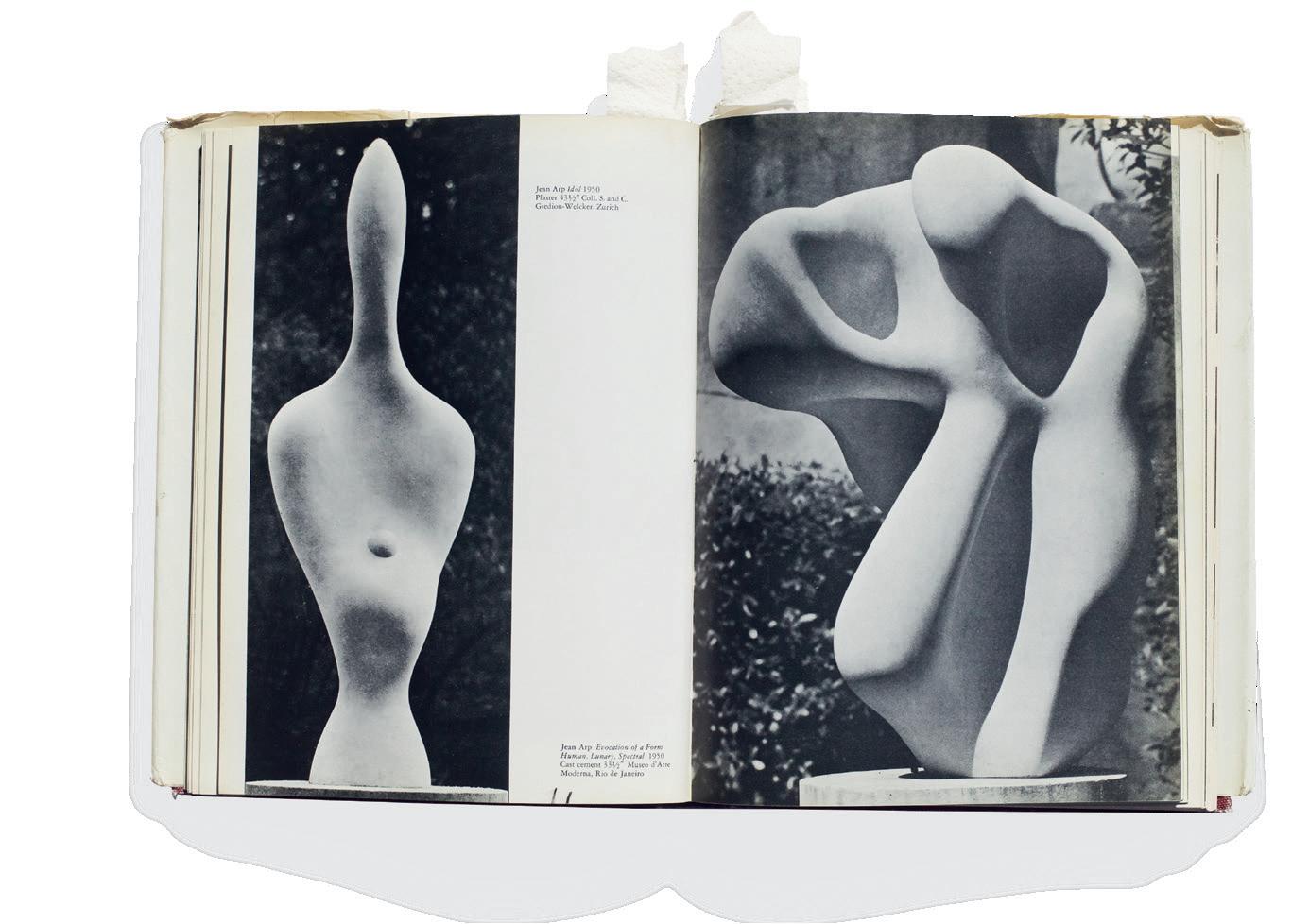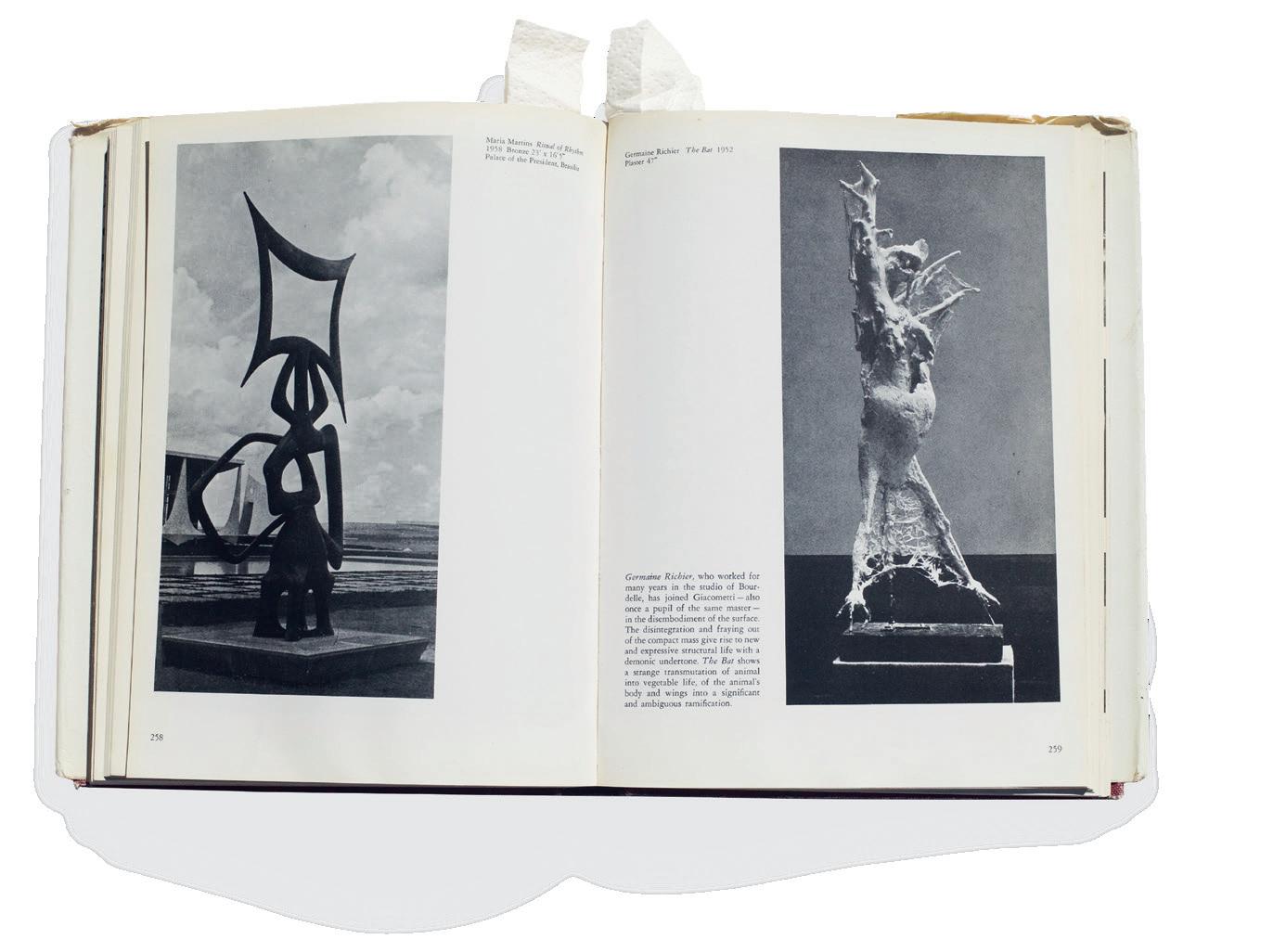
4 minute read
A Wonderful Artist
from Olga Jevric
Richard Deacon
I have been visiting Belgrade regularly since 2006 – in part to teach at the Academy of Fine Arts, but mostly because I have been working on an ambitious project for a pedestrian bridge with my friend and colleague Mrdjan Bajić. I saw sculptures by Olga Jevrić on my first visit to the city and since then have been enriched and excited by the continuing revelations of an extraordinary body of work by a wonderful artist. Sadly, Olga died in 2014; however I did have the pleasure of meeting her on several occasions and also of visiting her studio, as well as the extraordinary collection of her works that she donated to the Serbian Academy of Sciences and Arts in 2007.
In April 2006 I was invited to the Belgrade Academy of Fine Arts as guest professor in the context of the school’s exchange programme with the École Nationale Supérieure des BeauxArts in Paris, where I was then a professor. My host was the artist Mrdjan Bajić, who had spent a week with me in Paris the previous December as part of the same exchange programme. I had an intense week of teaching – Mrdjan’s students were an engaged and talented group of committed individuals. I ran a series of open and lively seminars discussing their individual works. Talking with Mrdjan over coffee at the beginning of the visit, he bemoaned the fact that both the National Museum and the Museum of Contemporary Art (a handsome 1970s building set in parkland at the conflux of the rivers Sava and Danube) were closed for refurbishment and had been for some time. It meant that his students were deprived of engagement with a vital resource – the particularities of their own rich art history. Additionally, in the post-Milošević period, following from the breakup of Yugoslavia and the disastrous war in Kosovo, travelling outside the country had become difficult for Serbian citizens. This was particularly hard on the generation to which Mrdjan’s students belonged: they had grown up in the period of the breakup, and the internet was thus the source of most of their information. Mrdjan, however, had some contacts in both museums and was able to arrange a special visit for me to both places one morning before I started teaching. I was lucky, and I am still grateful to Mrdjan for this. as if fallen randomly; and although performing as models the block sculptures beg to be experienced as structures and forms that interact with our own physical size –to rise above us, prompting us to reconsider our relationship to them and the world around, natural and human-made; but the small size of these works emphasises the intensity of the acts of making that have brought them into existence the various elements that comprise many of the sculptures in both exhibition venues are hand-sized and evidence the squeeze of fingers and palm; the immediacy of how the materials have been handled is urgent and very much in the present: these works could have been made today; the compression inherent to the forms in both the rod and lump works and the block works provokes an unease, and, as mentioned, questions arise as to whether the skeletal steel rods and long nail structures, which protrude erratically from the pressed shapes of the rod and lump sculptures, are stabbed into the cement and ferric oxide lumps, trapping them, or whether these lumps are squeezed around the rods, clinging on, as if about to slip –are these forms, which are so fixed by the rods and nails, in fact on the move, about to escape and break out of their incarceration? or are they protected by their steel framework and therefore settled where they are? this uncertainty is at the heart of the work and is its invisible centre –an emotion rather than a subject; the larger works, which extend beyond the hand-held and are between 30 and 120 centimetres in height, also carry this hot immediacy, and the larger size enables the mechanics of the works to be fully appreciated; left to right, top to bottom
Weaving through Space, 1969/78
Axial Configuration, 1969–71
Aggressive Forms I, 1959
Astatic Relation II, 1990
Five Massifs, 1965
Small Intersection Ib, 1985–2001
Cavernous Shape I, 1965 for me, Jevrić’s work is contextualised by the remarkable sculpture that emerged before, during and after the Second World War, reflecting the violence, destruction and cruelty that the world was being plunged into; the formal, intellectual, aesthetic and conceptual concerns that ranged from the impact of Duchamp and the readymade, through to the highly skilled, compressed masses of dense carvings that reveal imaginative adventures into invented form, and on to the spatial experiments with transparency, frames and grids that opened up sculpture to gravity, light and time –these provide the background to Jevrić’s extraordinary body of work, lying dormant in the library basement in Beograd;










Jevrić is referenced in Seuphor’s book –the work illustrated is Project for a Monument from 1956, utilising both an open framework of steel rods and the mass of modelled cement, and even though it is a small work it somehow embraces sculpture’s then concerns; now, visiting the exhibitions at PEER and Handel Street Projects, this relationship with a history of sculpture in which I was so immersed in the early 1960s disappears released from its basement store and installed in the two exhibition venues, Jevrić’s sculpture takes on its true powerful significance:
Olga Jevrić’s space-hungry works now have the space to stand alone, and the demands that each work makes for the space it requires are fulfilled; light and air flow through these works revealing their visceral potency, their deeply personal singularity and, above all, their opposing forces: their uncanny relevance to the troubled times we live in now, reciprocated by their awkward beauty and enlightening physical presence; an embodiment of hope and despair, and despair and hope; a timeless affirmation that opposites do attract.
Four spreads from Phyllida Barlow’s copy of Carola Giedion-Welcker’s Contemporary Sculpture: An Evolution in Volume and Space, Faber & Faber, 1960


